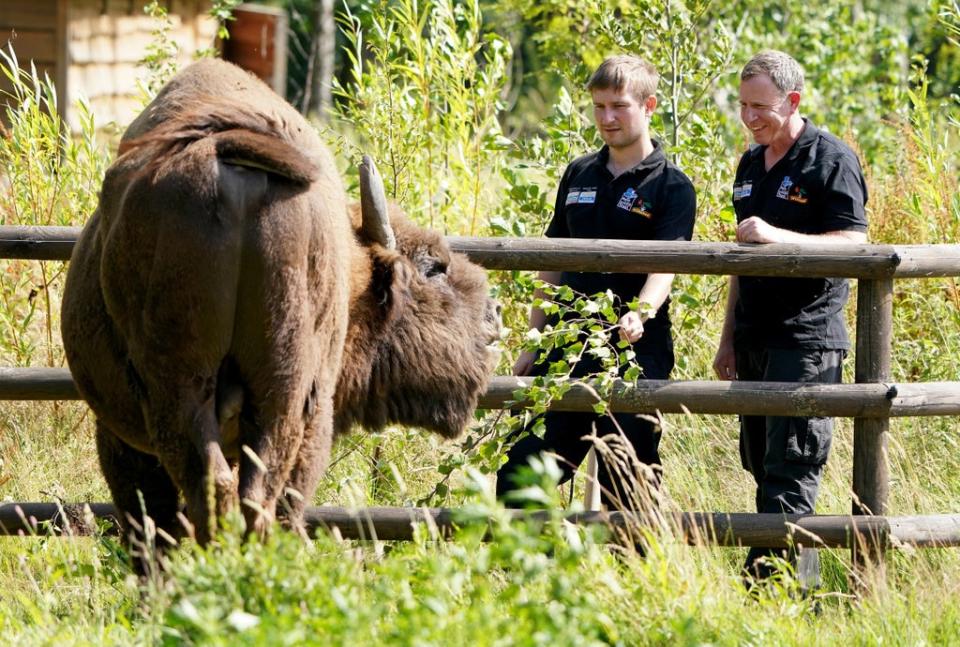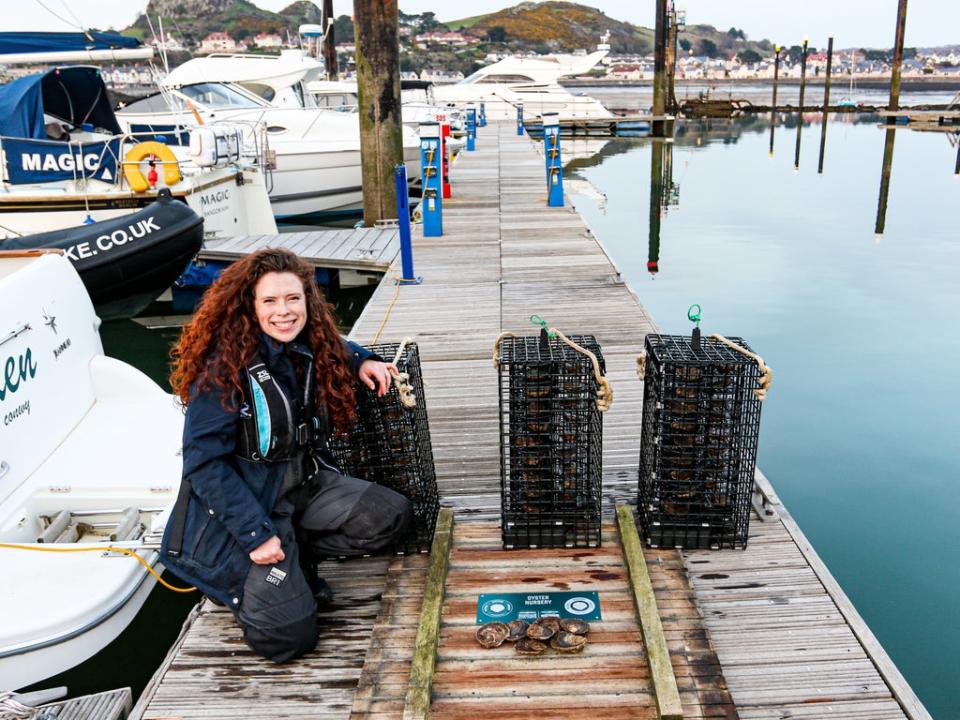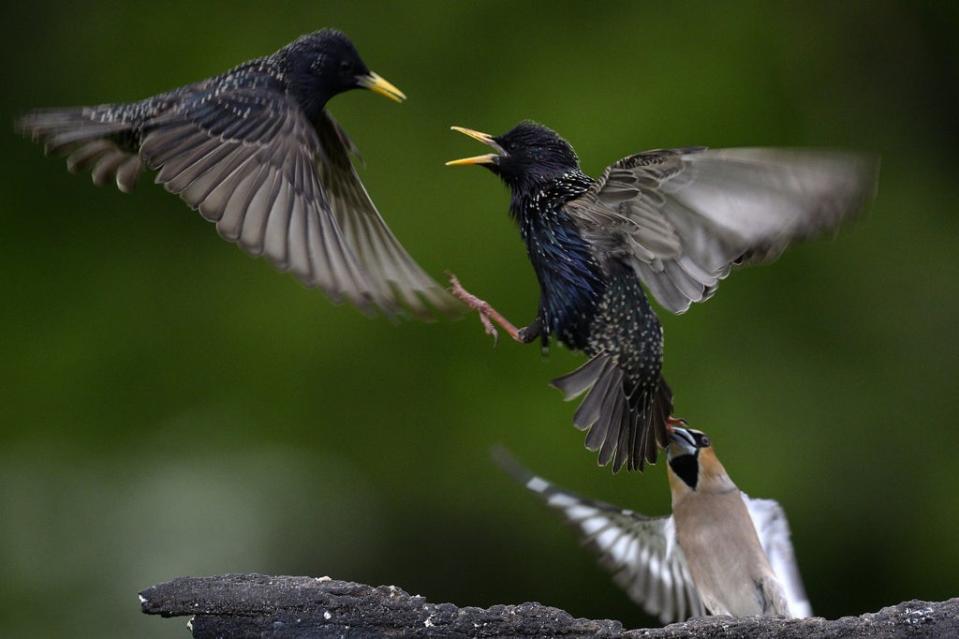The 2021 rewilding projects giving Britain hope for 2022

Britain isn't what it used to be. Much of this green and pleasant land has been paved over, or farmed to within an inch of its life. Rivers and seashores have been polluted.
But people are trying to change this through “rewilding” – the returning of land and sea to a more natural state – with pasture, golf courses and harbours among the areas being revitalised.
Proponents say this is vital if the UK's ecosystems are to weather the climate crisis.
And the process may help prevent carbon being released into the atmosphere in the first place, thanks to increased tree and long grass cover.
Here we look at just some of the rewilding projects that began in 2021.
Thinking big
Following the recruitment in 2021 of a pair of new rangers for Kent Wildlife Trust (KWT), the stage is officially set for the arrival of four huge bison near Canterbury in 2022.
As part of the trust's Blean Woods restoration scheme the one-ton herbivores will knock down trees and clear space for new plant growth – a “tangled mess” that will aid the return of species like heath fritillary butterflies and lesser spotted woodpeckers.
Pigs will also be brought in to turn over the ground and root up seeds, which, it is hoped, will boost turtle dove numbers.
KWT's Stan Smith tells The Independent: “We haven't had a species like this here for many thousands of years. These animals fulfil a role of disturbance in the landscape, and in the way they shape their environment they are a keystone species.
“There's nothing else that can do the job they can do. They can selectively fell trees, mature trees within woodland and create that diversity of structure that we would've once had. The alternative is to continue using chainsaws, machinery, big bits of carbon-intensive infrastructure.”

The bison project has generated public interest to an unprecedented degree, Smith says. “People do see bison as the headline and that is a fantastic opener to be able to talk to people about what is quite a challenging and nuanced [subject].
“We're talking about felling some trees at a time when the headline is, 'We need more trees' – and I totally agree with that – but it's a nuance that we need to be able to delve into.”
Progress will be monitored scientifically at a plant and species level, including through the use of a “control” area of land that will be managed using current tools.
Diving deeper
Think “rewilding” and you may picture a wildflower meadow or a hillside newly planted with trees. But Britain's seabeds are just as much in need of help as its countryside.
The Wild Oyster Project aims to kickstart coastal renewal by boosting numbers of the native molluscs and producing a cleaner environment.
Three inshore areas in northeast England, north Wales and Scotland were seeded with oyster larvae this year, and project leaders have urged Britons to “stop thinking of them as food and start thinking about them as ecosystem engineers”.
Alison Debney, of the Zoological Society of London, tells The Independent: “A lot of focus is often on the terrestrial environment and the marine, riverine and estuarine settings are often overlooked.
“We always think about native oysters on the plate … but when you see them underwater performing their function, they actually form a really important habitat, form complex seabeds by linking together a bit like coral reefs do.”

Oysters, as filter feeders, remove particulates from the water as well as fertiliser pollution like nitrates, says Debney, allowing light to penetrate and boosting plants like sea grass, in turn providing food and habitats for other species.
Oyster beds are also nurseries for fish. However, the UK has lost some 20,000 sq km of these due to pollution and overfishing. “Protecting what we've got” is no longer enough, Debney says, adding that ecologists must now take an active role.
She adds: “Sliding baselines mean we've forgotten what the marine habitat looked like. We've forgotten how complex and what rich diversity had been there. You can see that from the size of the fish in some old photographs – how they've got smaller over time.”
Civic duty, and overcoming fear of change
Rewilding can be a hard sell. Nearby residents and landowners may “perceive it as change being imposed on them and that, somehow control of their own destiny ... is being wrestled away from them”, says Peter Cairns.
Despite that, the movement has accelerated over the past few years and will likely only gather pace, the executive director of Scotland The Big Picture, a rewilding advocacy group, tells The Independent.
He says this is partly because Britons now recognise they have a “civic duty, if you want to call it that, towards climate change and nature recovery” and that these crises are closely linked.
In addition, proprietors and farmers have noted the direction of travel – economic and political – and have signed up for rewilding projects for altrustic or business reasons, or both.
Overcoming “lazy associations” like the idea rewilding means “wolves in and farmers out” is key, says Cairns.
His organisation has had considerable success this year with the launch of its Northwoods Rewilding Network. Cairns says: “We kicked that off in April with six land partners, we're now up to 34 land partners with an aggregate area of over 10,000 acres.
“These are farms, crofts, community woodlands, small estates stepping forward and saying, 'I want to put nature recovery front and centre of my operation'. The appetite for that shows no sign of waning.”

The scheme is open to people who have between 50 and 1,000 acres. It is “specifically designed to show that rewilding isn't the exclusive preserve of the big eco-philanthropists or conservation groups” and aims to create a “series of stepping stones, nodes ... to improve landscape connectivity”.
Another boost to rewilding north of the border in 2021 was the Scottish government's decision to support the wider reintroduction of beavers, another species hailed, like oysters and bison, for its “engineering” role. The rodents also returned to Nottinghamshire this autumn for the first time in 400 years.
Cairns further points to the recent community buyout of a 5,000-acre estate at Langhthingsolm, now set to become a nature reserve, as “symbolic” of the movement's progress.
Got a story you think we should report? Click here to contact us.
Nature nearby
For some rewilding groups, the hearts-and-minds battle can be won by dispelling the idea of nature as “elsewhere”. Having wild spaces near home will help people care about restoring habitats, according to Matt Buckler of the Derbyshire Wildlife Trust (DWT).
He tells The Independent: “The climate and nature crisis is happening everywhere and one of the things the wildlife trusts are very keen on is making sure people have a connection with nature.
“I think that's one of the things that's come out of lockdown. It's great having big areas where people can go – it would be great if we could have a Yellowstone in the UK, but we wouldn't be able to have very many of them.
“With the restrictions in movement, it's really important that we get high-quality, nature-filled spaces as close to people as we possibly can.”
This is the thinking behind the rewilding of Derby's Allestree Park, which was given approval by local councillors in November. Residents are to be consulted between January and March on what they would like to see done with the area, which includes a former golf course.

Buckler has ideas of his own, which read something like a Redwall novel. He would be thrilled to see the practically extinct red-backed shrike introduced; the bird's presence is an indicator of quality habitats, he says.
He hopes for a revival of formerly common birds like house sparrows, bullfinches and starlings, and possibly lesser spotted woodpeckers. Large colonies of meadow brown butterflies might find a home in newly “unkempt spaces”, while harvest mice and water voles could also be brought in.
Allestree Park currently has “lots of right angles”, says Buckler, and DWT wants to “blend the edges” to help nature. Golf courses in particular – which, as George Carlin once observed, do take up a lot of space – can be “green deserts” if intensely managed and manicured, he adds.
Scrubby shrubbery
Despite the gains made by rewilders in recent years, the UK is “still going backwards on conservation and biodiversity”, warns Alastair Driver, director of Rewilding Britain. Nonetheless, he believes this can be turned around in favour of species recovery and climate change mitigation.
“If you do large numbers of these things, cumulatively they really make a difference,” he tells The Independent.
The value of gaining private landowners' support, as Scotland The Big Picture has, is evidenced by the achievements at the Broughton Hall estate in Yorkshire where Driver is a specialist adviser separately to his charity role. Less than three years after he first met proprietor Roger Tempest a “transformational” plan has been agreed and set in motion for 1,100 acres, which Driver says is much less time than would be needed for a large-scale public project.
He says: “We've ceased sheep and cattle grazing … while planting 200,000 native trees and shrubs. That makes it the biggest scheme of its kind in the country last winter.”
Alongside the trees planted in early 2021, grass has been allowed to grow wild and long, providing further carbon sequestration alongside its ecological benefits. These are the scrubby spaces where wildlife thrives and is closer to the land's wild state, instead of the neat green fields evoked by the term “countryside”.
Streams have been “de-culverted” this year too, meaning they have been dug out of their pipes below ground and allowed to run a more natural course. Some 140 “leaky dams” have been installed on hillsides to slow the flow of rain water, mitigating flood risk.
Echoing Alison Debney, Driver says positive action is needed because waiting for a farmed landscape to regenerate naturally might take a century or more.
In the end, however, the goal is “moving towards the point where nature is taking care of itself”.
Got a story you think we should report? Click here to contact us.

 Yahoo News
Yahoo News 
